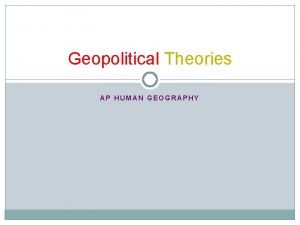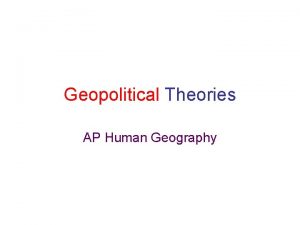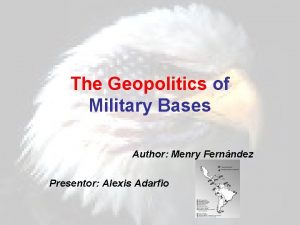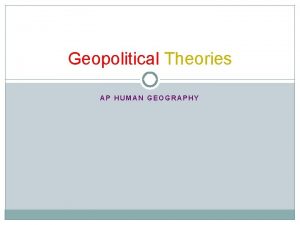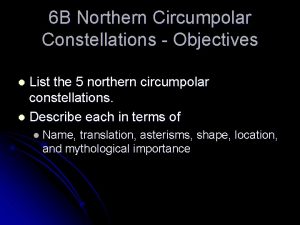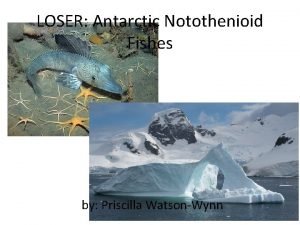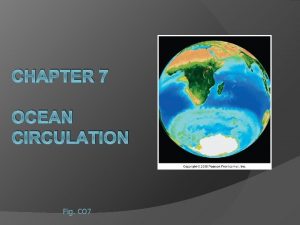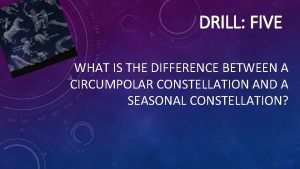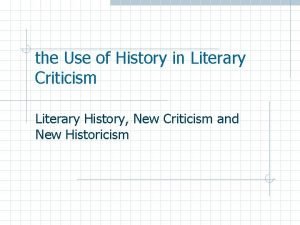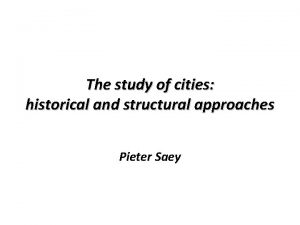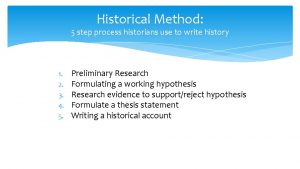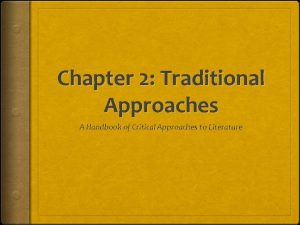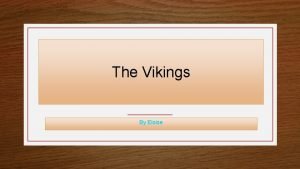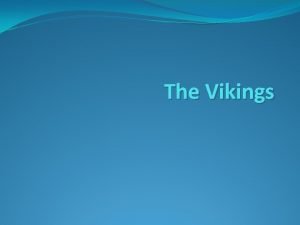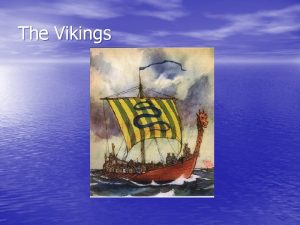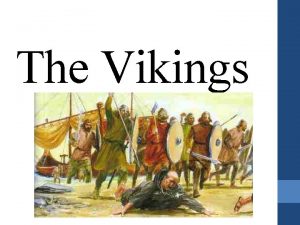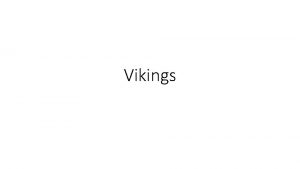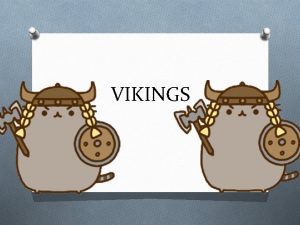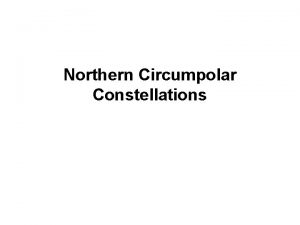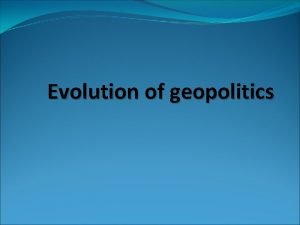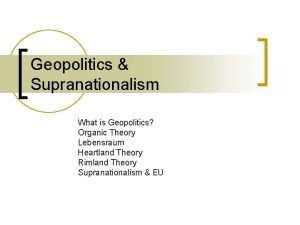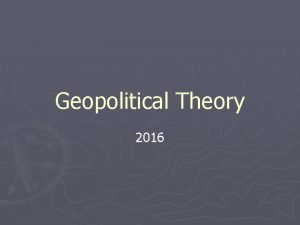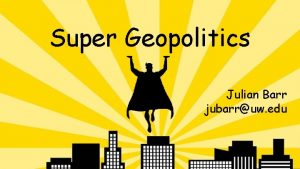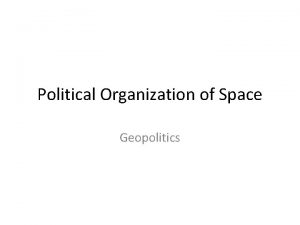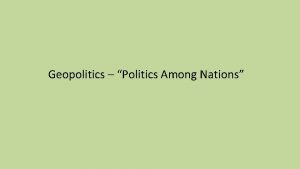Vikings and the Circumpolar Geopolitics A Historical Approach
















- Slides: 16

Vikings and the Circumpolar Geopolitics: A Historical Approach to the Arctic Region Prof. Lassi Heininen University of Lapland, Finland Borders in the North - Summer Institute June 21, 2016 – Whitehorse, Yukon

Starting points • IR doesn’t deal with history. It is, however, possible to apply (new) critical approaches to ’Geopolitics’ to historical periods. • ”The Viking Age presented a new context that reframed relationships of time, place and the actors that used, produced and developed new kinds of factors, such as technology and knowledge, mobility, networks, identities and adaptation. ” (Heininen, Ahola and Frog, 2014. ’Geopolitics’ of the Viking Age? Actors, Factors and Space). • The term ’Viking’ has many connotations, become a modern stereotype with an image of a ’primitive’ European (e. g. ’viking raid’), and used in nationalism and black metal music. • Historically, the Viking Age (a. 800 -1050 AD) characterized by Nordic raiders who roamed in Northern and Western Europe.

References and suggested readings • Fibula, Fact: The Viking Age in Finland. Eds. by Joonas Ahola & Frog with Clive Tolley. Studia Fennica Historica. Finnish Literature Society: Vantaa, 2014. => Heininen, Lassi, Ahola, Joonas and Frog. “’Geopolitics’ of the Viking Age? - Actors, Factors and Space. ”, 296 -320. • The Viking Age in Åland. Insights into Identity and Remnants of Culture. Eds. by Joonas Ahola, Frog & Jenni Lucenius. Annales Academiae Scientiarum Fennicae Humaniora Series. Sastamala: Finnish Academy of Science and Letters, 2014. => Heininen, Lassi, Jan Storå, Frog & Joonas Ahola. “Geopolitical Perspectives on Åland in the Viking Age. ”, 323 -348.


State of Arctic geopolitics? (The Washington Post in November 2007)






(Re)constracting the Arctic as Geopolitical space Factors of ’Classical’ Geopolitics: Physical space, Natural resources, Power/Force – e. g. the Resource Models, the Technology Models, a/the state as the subject. > This reflects exploration, national processes on nation-building and state sovereignty, incl. militaristic approach (‘Realpolitik’). More factors of ’Critical Geopolitics’: Actors, Identity (politics), Knowledge, ‘Politicization’ of (physical) space – e. g. ‘Geoeconomics’, internal/external Images, power relations of knowledge, several subjects. > This reflects sophisticated power, knowledge (on climate), actors as ‘subjects’, ‘globalization’ (‘Constructivism’).


Applications to the Viking Age • Actors = ’Nordic raiders’ (Norsemen) and their settlements; • Identity(-ies) = Courage, curious and tolerance (Thor and other gods) => absence of prejudice (’Northerness’); • Knowledge(s) = Skills, innovations, technologies; • Power/Knowledge= Mobility, communication lines; • ’Politicization’ of physical space = Connectivity across Northern Europe, consciousness of ’Europe’ as a distinctive region => Southern powers - the Catholic church - arrived to the North afterwards…

Central aspects • ’Mobility’: farmers, traders and settlers, being also shipbuilders and navigators, were capable and skilful to build ships that were light and dupable to both sail the open seas and navigate inland river routes. • The extent of communication expanded tremendously in scope: ’connectivity’ => the Vikings as ’great communicators’. • The diversity was diminished through unification => instead of independent status of local identities the development of larger, shared identities. • Great advances in fields of technology (’high tech’), and an understanding of the strategic importance of knowledge. • Context of time, place and actors: established a new kind of political entity, a cooperative region in Northern Europe and Atlantic.

Historical perspectives and reflactions Historical perspectives to the entire North: Regionalism vs. State Policy: • The Viking Age – new actors and factors; • Great powers to Northern, Arctic seas; • The Pomor trade (across borders); • States to the North (with borders as boundaries); • ’Militarization’ of the Arctic (Ocean); • Environmental awakening (by non-state actors) and (functional) cross-border cooperation and new regionalism.

Conclusions • A peaceful and stable region, not overtly plagued by conflicts. And the Arctic plays a more important role in world politics: stability-building as a common ground and ‘policy-shaping’ (under the auspices of the AC) as an innovative method. • The new multi-dimensional dynamics has made circumpolar geopolitics global, and the globalized Arctic has relevant implications worldwide. • There also interesting historical perspectives, and even reflections to the present, when applying critical approaches of Geopolitics, e. g. identity, knowledge, to historical periods. • The Viking Age, characterized by a small group of Nordic raiders who largely roamed in Northern Europe and Atlantic, was the first time, when a cooperative region was established in the entire North.
 Geopolitical theory ap human geography
Geopolitical theory ap human geography Organic theory ap human geography
Organic theory ap human geography Menry fernandez
Menry fernandez Rimland theory ap human geography
Rimland theory ap human geography Mazzaroth
Mazzaroth Northern circumpolar constellations
Northern circumpolar constellations Nototheniod
Nototheniod Antarctic circumpolar current
Antarctic circumpolar current Five circumpolar constellations
Five circumpolar constellations Biographical criticism definition
Biographical criticism definition Principles of new historicism
Principles of new historicism Literary approaches
Literary approaches Steps in historical method
Steps in historical method Traditional approach in literature
Traditional approach in literature A switched wan is normally implemented as a network
A switched wan is normally implemented as a network Deep learning approach and surface learning approach
Deep learning approach and surface learning approach What were the vikings known for
What were the vikings known for
